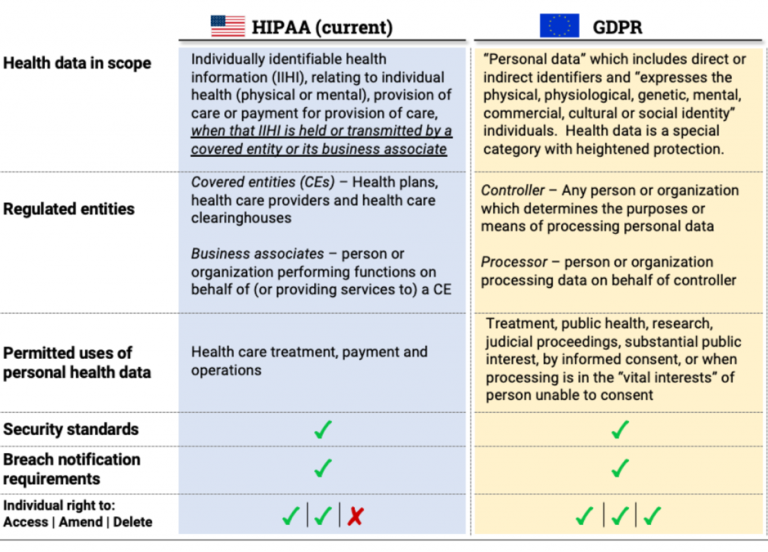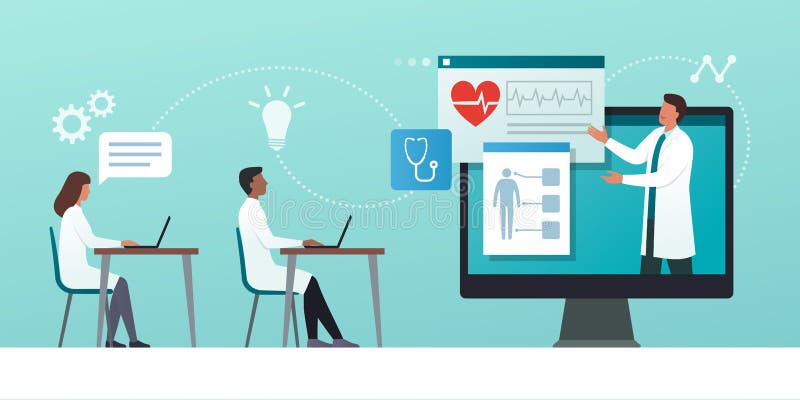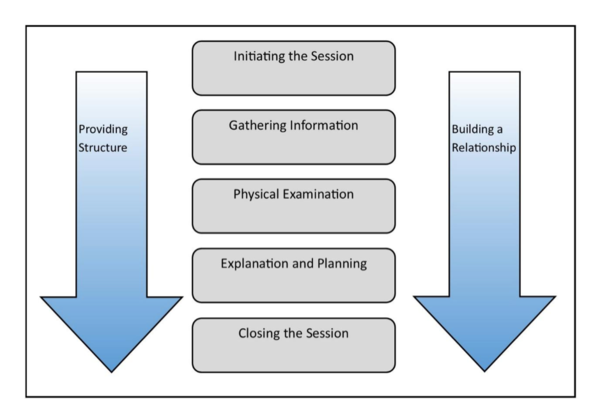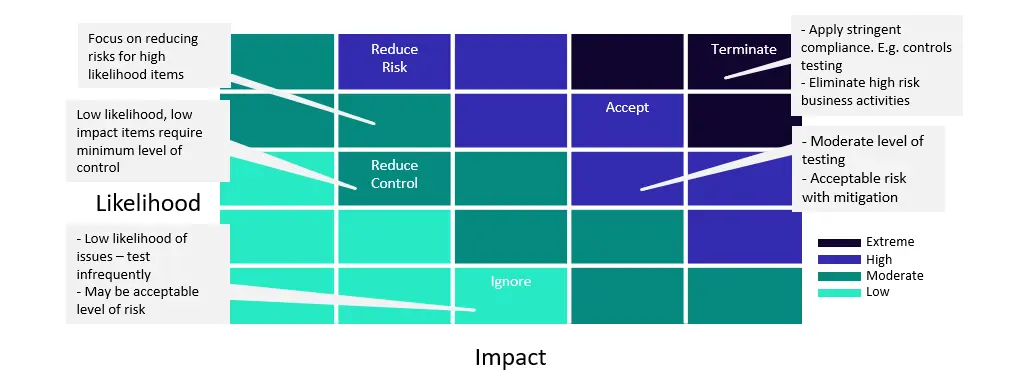Transforming Medical Law Complexity into Visual Understanding: A Modern Approach
Navigate the intersection of healthcare practice and legal frameworks with powerful visualization techniques
Medical law encompasses a complex web of regulations, ethical considerations, and procedural requirements that impact healthcare delivery at every level. By transforming these intricate concepts into visual representations, practitioners and patients alike can better understand their rights, responsibilities, and potential legal exposures in the healthcare ecosystem. This guide explores how advanced visualization techniques can revolutionize medical law education, compliance, and risk management.
The Evolving Landscape of Medical Law
Medical law represents the complex intersection where healthcare practice meets legal frameworks. This multidisciplinary field governs everything from patient rights to provider responsibilities, creating a structured system that ensures ethical and standardized care delivery.

Historical progression of medical law from ancient ethical codes to comprehensive modern frameworks
Historical Evolution
The journey of medical law began with the Hippocratic Oath's simple ethical guidelines and has evolved into comprehensive regulatory systems that govern every aspect of healthcare delivery. This transformation reflects society's changing expectations of medicine and the increasing complexity of healthcare systems.
Multidisciplinary Nature
Modern medical law draws from various disciplines including ethics, constitutional law, criminal law, contract law, and tort law. This multifaceted approach is necessary to address the wide range of situations that arise in healthcare settings, from emergency rooms to long-term care facilities.
Current Challenges
Today's medical law practitioners face unprecedented challenges including rapid technological advancement, shifting regulatory landscapes, and evolving ethical standards. These challenges require innovative approaches to both understanding and applying medical law principles. AI legal assistants are increasingly being used to help navigate these complex waters.
Key Challenges in Modern Medical Law
The following chart illustrates the primary challenges facing today's medical law practitioners:
Visual Transformation of Complex Concepts
PageOn.ai's visual mapping capabilities can transform intricate legal-medical relationships into clear visual hierarchies. By representing complex legal concepts through intuitive diagrams and flowcharts, medical professionals can more easily understand their legal obligations without needing extensive legal training.
Core Components of Medical Law Visualization
Effective visualization of medical law concepts can dramatically improve understanding and compliance. By breaking down abstract legal principles into visual elements, healthcare providers can more easily integrate legal requirements into their daily practice.
Patient Rights and Autonomy
Informed consent represents one of the most fundamental aspects of patient rights. Creating visual informed consent flowcharts helps providers ensure they're meeting legal requirements while respecting patient autonomy.
Informed Consent Process Flowchart
The following diagram illustrates the standard process for obtaining legally valid informed consent:
flowchart TD
A[Assess Patient Capacity] --> B{Capacity Present?}
B -->|Yes| C[Disclose Material Information]
B -->|No| D[Identify Surrogate Decision-Maker]
D --> C
C --> E[Ensure Understanding]
E --> F{Questions?}
F -->|Yes| G[Address Questions]
G --> F
F -->|No| H[Confirm Voluntary Choice]
H --> I{Consents?}
I -->|Yes| J[Document Consent]
I -->|No| K[Respect Refusal]
J --> L[Proceed with Treatment]
K --> M[Explore Alternatives]
Medical Negligence and Malpractice
Medical negligence cases involve complex causation chains and specific legal requirements. Visualizing these elements can help both legal and medical professionals better understand the burden of proof and necessary elements to establish liability.
Elements of Medical Negligence
The following diagram shows the four essential elements required to establish medical negligence:
flowchart LR
A[Duty of Care] --> B[Breach of Standard]
B --> C[Causation]
C --> D[Damages]
style A fill:#FFF2E6,stroke:#FF8000
style B fill:#FFF2E6,stroke:#FF8000
style C fill:#FFF2E6,stroke:#FF8000
style D fill:#FFF2E6,stroke:#FF8000
Regulatory Compliance Visualization
Healthcare is one of the most regulated industries, with requirements varying significantly across jurisdictions. Visual representations of regulations like HIPAA and GDPR can transform dense legal text into actionable guidelines. Those working on mental health topics must be particularly attentive to privacy regulations.

Comparative visualization of HIPAA and GDPR requirements for healthcare data protection
Ethical Frameworks
Medical ethics principles often form the foundation of medical law. Transforming abstract ethical principles into structured decision trees helps practitioners navigate complex scenarios while remaining legally compliant.
AI Blocks for Legal-Ethical Scenarios
PageOn.ai's AI Blocks feature allows medical and legal professionals to build customizable scenarios that integrate both legal requirements and ethical considerations. This visual building-block approach helps bridge the gap between abstract legal concepts and practical clinical applications.
Ethical Principles in Medical Law
This radar chart illustrates how different ethical principles influence various areas of medical law:
Bridging Knowledge Gaps in Medical-Legal Education
Medical professionals often receive limited formal training in legal matters, creating potential knowledge gaps. Visual learning approaches can bridge these gaps effectively, making complex legal concepts accessible and applicable in clinical settings.

Medical students using interactive visual learning tools to understand legal obligations
Visual Learning Approaches
Visual learning strategies significantly enhance retention and understanding of complex legal concepts. For medical professionals, these approaches can transform abstract legal requirements into practical, applicable knowledge. Creating argumentative essay topics around medical law can help students engage more deeply with these concepts.
Interactive Case Studies
Interactive visual case studies that demonstrate the consequences of legal compliance or non-compliance provide contextual learning opportunities. These simulations allow medical professionals to experience the outcomes of different approaches in a safe learning environment.
Effectiveness of Learning Methods for Medical Law
Comparison of retention rates across different educational approaches:
Simplifying Complex Statutes
Legal statutes are often written in dense, technical language that can be difficult for non-lawyers to interpret. Visual storytelling techniques can transform these complex texts into understandable narratives that highlight key requirements and prohibited actions.
Specialty-Specific Training
Different medical specialties face unique legal challenges. Training modules that adapt to specialty-specific requirements ensure that professionals receive relevant legal education without being overwhelmed by inapplicable information. The thesis defense presentation format can be adapted for specialty-specific legal training.
Deep Search Integration
PageOn.ai's Deep Search functionality allows educators to integrate relevant case law and regulatory updates into educational materials in real-time. This ensures that visual educational content remains current with evolving legal standards and precedents.
Integration of Legal Updates into Educational Content
The following flowchart illustrates how PageOn.ai's Deep Search integrates legal updates into educational materials:
flowchart TD
A[Monitor Legal Databases] --> B[Detect Relevant Updates]
B --> C{Is Update Significant?}
C -->|Yes| D[Extract Key Changes]
C -->|No| A
D --> E[Generate Visual Representation]
E --> F[Integrate into Educational Module]
F --> G[Notify Users of Updates]
G --> H[Track Comprehension]
H --> A
Documentation and Risk Management Visualization
Proper documentation is both a clinical necessity and a legal safeguard. Visual standards for documentation can enhance compliance while improving the quality and consistency of medical records.
Visual Standards for Record-Keeping
Creating visual standards for compliant medical record-keeping helps providers understand what information must be documented and how it should be structured. These visual guides can reduce documentation errors while ensuring legal requirements are met.

Visual template for legally compliant medical record documentation
Mapping Liability Exposures
Healthcare systems contain numerous potential liability exposures. Visually mapping these exposures across different departments and processes helps organizations prioritize risk management efforts and allocate resources effectively.
Hospital Department Risk Map
This diagram shows relative legal risk levels across hospital departments:
flowchart TD
Hospital[Hospital System] --> ED[Emergency Department]
Hospital --> Surgery[Surgical Services]
Hospital --> OB[Obstetrics]
Hospital --> Rad[Radiology]
Hospital --> Pharm[Pharmacy]
Hospital --> IT[Health IT]
classDef highRisk fill:#FF8000,stroke:#000,stroke-width:1px,color:#000;
classDef medRisk fill:#FFB478,stroke:#000,stroke-width:1px,color:#000;
classDef lowRisk fill:#FFE6CC,stroke:#000,stroke-width:1px,color:#000;
class ED,Surgery,OB highRisk;
class Rad,Pharm medRisk;
class IT lowRisk;
Continuity-of-Care Protocols
Failures in the continuity of care represent a significant source of liability. Building visual continuity-of-care protocols helps ensure that patient handoffs and transitions meet legal requirements while maintaining patient safety. Specialists creating AI ChatGPT prompts for legal writing can help develop these protocols.
Adverse Event Reporting
Proper adverse event reporting is critical for both patient safety and legal compliance. Visual guidance for these procedures helps ensure that all necessary steps are followed and properly documented.
Most Common Documentation Deficiencies Leading to Legal Action
This chart shows the relative frequency of documentation issues in medical malpractice cases:
Actionable Visual Workflows
PageOn.ai can transform vague compliance requirements into actionable visual workflows. These clear, step-by-step visualizations guide healthcare providers through complex processes while ensuring each step meets relevant legal standards.
The Patient-Provider Relationship Through a Legal Lens
The patient-provider relationship forms the foundation of healthcare delivery and is governed by numerous legal requirements. Visualizing the boundaries and obligations within this relationship can help providers navigate it more effectively.
Visualizing Relationship Boundaries
Clear visual guides to the boundaries of the provider-patient relationship help practitioners understand when legal duties begin and end. This clarity is especially important in increasingly complex delivery systems with multiple providers.
Provider-Patient Relationship Establishment and Termination
This diagram shows when legal duties begin and end in the provider-patient relationship:
flowchart LR
A[No Relationship] --> B[Establishment]
B --> C[Active Relationship]
C --> D[Proper Termination]
C --> E[Improper Abandonment]
D --> F[Relationship Ended]
E --> G[Liability Continues]
style B fill:#FFF2E6,stroke:#FF8000
style C fill:#FFF2E6,stroke:#FF8000
style D fill:#FFF2E6,stroke:#FF8000
style E fill:#FFCCCC,stroke:#FF0000
Communication Requirements
Communication between providers and patients is subject to numerous legal requirements. Mapping these requirements helps ensure that all necessary information is conveyed appropriately and documented sufficiently.

Visual guide to legally required provider-patient communications
Navigating Difficult Conversations
Certain medical discussions, such as those around end-of-life care or adverse outcomes, carry heightened legal sensitivity. Visual guides for these conversations help providers fulfill their legal obligations while maintaining compassionate care.
Illustrating Consent Processes
Different medical scenarios require different consent processes. Visual illustrations of these variations help providers select and implement the appropriate consent procedure for each situation.
Types of Consent by Medical Scenario
This chart illustrates which consent types are appropriate for different medical situations:
PageOn.ai Conversational Interface
PageOn.ai's conversational interface can generate appropriate visual aids for complex patient discussions. This feature helps providers quickly create visuals tailored to specific situations, enhancing communication while ensuring legal compliance.
Future Directions: Technology and Medical Law
Technological advances continue to reshape both healthcare delivery and the legal frameworks governing it. Understanding and visualizing these emerging issues is essential for forward-thinking healthcare and legal professionals.
Telemedicine and Cross-Jurisdictional Practice
Telemedicine has created complex questions about licensure and practice across jurisdictional boundaries. Visual frameworks can help providers understand when and how they can legally provide care across state or national borders.
Telemedicine Legal Jurisdiction Framework
This flowchart helps providers determine which jurisdiction's laws apply in telemedicine scenarios:
flowchart TD
A[Provider Location] --> C{Patient Location?}
C -->|Same State| D[Follow State Law]
C -->|Different State| E{Interstate Compact?}
E -->|Yes| F[Follow Compact Rules]
E -->|No| G{Emergency?}
G -->|Yes| H[Limited Exception May Apply]
G -->|No| I[Licensure Likely Required in Patient's State]
style C fill:#FFF2E6,stroke:#FF8000
style E fill:#FFF2E6,stroke:#FF8000
style G fill:#FFF2E6,stroke:#FF8000
AI in Healthcare
Artificial intelligence applications in healthcare raise novel legal and ethical questions. Creating visual frameworks for these emerging issues helps organizations develop appropriate policies and safeguards.

Visual framework for assessing legal risk in AI healthcare applications
Blockchain and Medical Records
Blockchain technology offers new possibilities for medical record management, but also raises questions about data ownership and accessibility. Mapping these new paradigms helps organizations navigate the transition to emerging technologies.
Personalized Medicine Legal Implications
Personalized medicine approaches create unique legal questions around standard of care, informed consent, and privacy. Visual guides to these uncertain territories help practitioners adapt to evolving standards.
Emerging Technology Legal Readiness
This chart shows the current level of legal framework development for emerging healthcare technologies:
Adapting to Rapid Change
PageOn.ai can help legal and medical professionals adapt to rapid technological change through dynamic visual content. As regulations evolve to address new technologies, PageOn.ai's tools allow for quick updates and dissemination of visual guidance.
Transform Your Medical Law Understanding with PageOn.ai
Convert complex medical-legal concepts into clear, actionable visualizations that enhance compliance, improve education, and reduce risk across your healthcare organization.
Start Creating Visual Legal Guides TodayEmbracing Visual Approaches to Medical Law
As medical law continues to evolve in complexity, visual approaches offer a powerful strategy for enhancing understanding, improving compliance, and reducing legal risk. By transforming abstract legal concepts into clear visual expressions, healthcare organizations can bridge knowledge gaps and promote a culture of informed legal compliance.
PageOn.ai's versatile visualization tools offer medical and legal professionals the ability to create custom visual content that addresses their specific needs. From creating interactive educational materials to designing clear compliance workflows, these visual approaches can dramatically improve both the comprehension and application of medical law principles.
In an increasingly complex healthcare landscape, the ability to clearly visualize medical law concepts isn't just helpful—it's essential. By embracing these visual approaches, healthcare organizations can enhance patient care while simultaneously reducing their legal exposure.
You Might Also Like
How to Design Science Lesson Plans That Captivate Students
Create science lesson plans that captivate students with hands-on activities, clear objectives, and real-world applications to foster curiosity and critical thinking.
How to Write a Scientific Review Article Step by Step
Learn how to write a review article in science step by step. Define research questions, synthesize findings, and structure your article for clarity and impact.
How to Write a Self-Performance Review with Practical Examples
Learn how to write a self-performance review with examples and tips. Use an employee performance review work self evaluation sample essay to guide your process.
How to Write a Spec Sheet Like a Pro? [+Templates]
Learn how to create a professional spec sheet with key components, step-by-step guidance, and free templates to ensure clarity and accuracy.
